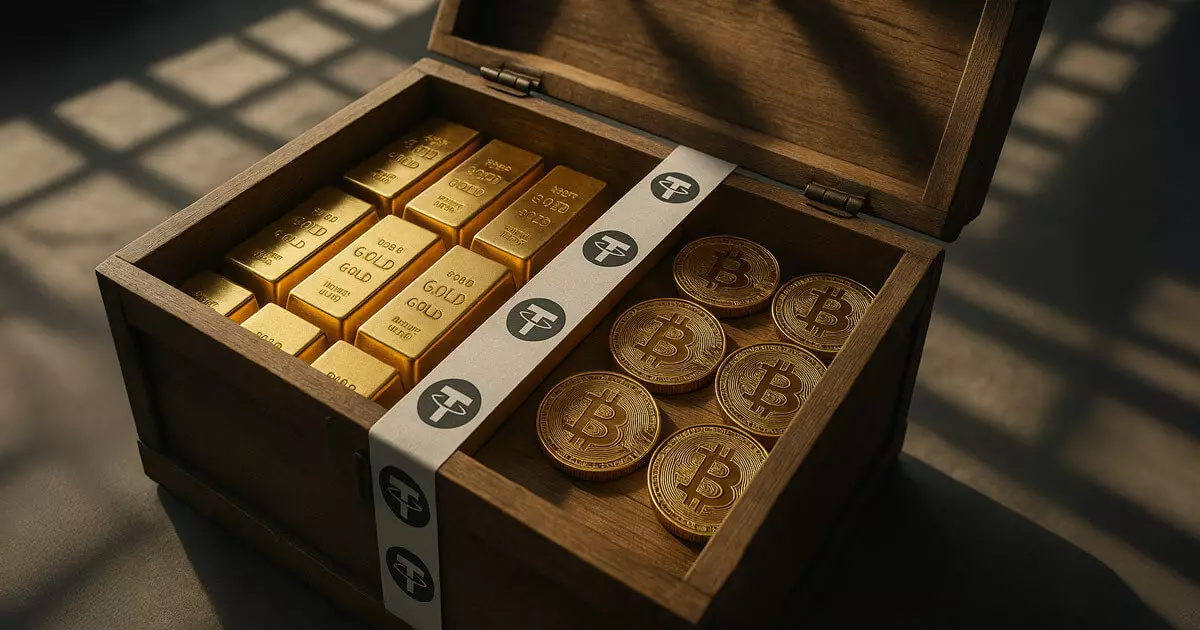In an era dominated by digital assets, Tether’s recent disclosures about its gold holdings challenge the conventional narrative surrounding stablecoins. While most see stablecoins merely as digital tokens pegged to fiat currencies, Tether’s strategic reserve diversification signals a deeper understanding of the financial landscape. Holding approximately $8 billion in physical gold tucked away in a Swiss vault—dubbed “the most secure in the world”—demonstrates a deliberate effort to bolster trust and stability amid growing skepticism about the sustainability of fiat currencies. This move underscores a fundamental shift: blending traditional assets with blockchain technology is not just an experiment but a potential safeguard against systemic risk. Rather than relying solely on digital representations of fiat currency, Tether’s incorporation of gold introduces tangible backing that could insulate USDT from fiat currency devaluation and monetary mismanagement, especially in uncertain geopolitical times.
The Political and Regulatory Tensions
However, Tether’s innovative stance faces stiff headwinds from regulators increasingly wary of commodities behind stablecoins. Legislation like the US’s GENIUS Act and the European Union’s MiCA framework aim to curb the use of non-cash assets as collateral, ostensibly to prevent shadow banking practices or market manipulations. These regulations, while designed to protect consumers and preserve monetary stability, could inadvertently hinder the growth of crypto-backed assets like Tether’s gold reserves. If restrictions tighten, Tether might be compelled to liquidate significant portions of its bullion holdings—undermining its diversified approach—and shift towards safer, more compliant instruments. Yet, Tether’s leadership remains optimistic, highlighting the practicality of self-custody to keep costs minimal and to expand their gold-backed offerings. This tension reveals a fundamental divergence: traditional regulatory frameworks are ill-equipped to accommodate innovative financial instruments that challenge the boundaries of conventional banking.
The Strategic Significance Amid Geopolitical Uncertainty
The timing of Tether’s gold reserves isn’t coincidental. As global tensions escalate—particularly within the BRICS nations—central banks are actively increasing gold purchases as a hedge against economic instability and currency devaluation. Ardoino’s assertion that every BRICS country’s central bank is acquiring gold emphasizes a shared awareness: sovereign entities recognize gold as a resilient store of value. For Tether, this presents an opportunity to position itself as a refuge for investors seeking to sidestep the risks of declining fiat currencies and unstable banking systems. Moreover, with gold prices rising approximately 25% in 2025, Tether’s strategic accumulation reinforces its credibility as a “safe haven” asset, aligning its reserve assets with the broader movement towards tangible, resilient wealth preservation. This positioning also hints at a broader trend among forward-thinking investors: a cautious retreat from traditional fiat reliance and a move towards diversified, asset-backed on-chain solutions.
A Balancing Act Between Innovation and Regulation
Despite its strategic foresight, Tether’s ambitions are not without hurdles. Regulatory authorities in the US and Europe remain cautious, often viewing commodities like gold with suspicion when used as collateral. The firm’s current holdings—around 7.7 tons of gold—are manageable in redemption scenarios but remain a fraction of the vast reserves behind some exchange-traded funds. Achieving regulatory approval for larger-scale gold backing would require navigating complex compliance landscapes and potentially risking the very trust Tether aims to reinforce. Yet, Ardoino’s assertion that Tether can scale gold-backed solutions without prohibitive costs highlights a pragmatic approach: leverage traditional assets to build confidence while innovating within regulatory boundaries. Ultimately, Tether’s strategic gamble hinges on proving that a gold-intensive reserve model can deliver both the stability and liquidity essential for a credible stablecoin—an assertion that could reshape the entire digital asset ecosystem if successful.
















Leave a Reply